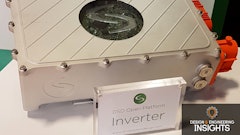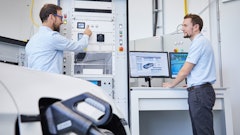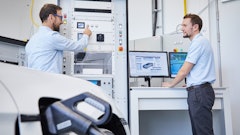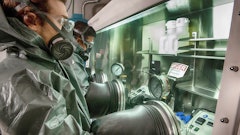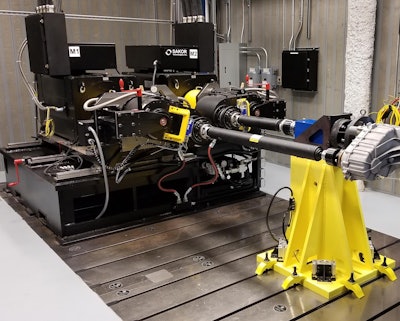
Over the past decade there has been a tremendous surge of interest in hybrid and electric vehicle (HEV) technology in the off-road heavy vehicle market, including construction and mining vehicles.
To gain promised efficiency benefits and green profile from these vehicles, driveline and component testing conducted during design and manufacturing must be specially adapted to the particular nature of HEVs.
Hybrid and electric drivetrains have several features that make testing them very different from the standard testing conducted on internal combustion (IC) only systems.
First of all, HEV systems use regenerative braking, in which braking actually generates power that is returned to and stored in the vehicle’s battery for later use. This typically requires addition of fairly complex AC inverter technology, and often more complex transmissions.
These vehicles also often have several module control units (MCUs), essentially small onboard computers, which control the functions of such major subsystems as the engine, transmission, and charging system, among others.
Proper testing of these components requires the test system to communicate with one or more of these units via a high speed in-vehicle network, requiring a far more complex system than those used in IC-only systems.
Fortunately, the technology is out there to ensure proper testing and realization of the energy efficiency benefits. What’s more, the testing technology is itself energy efficient, reducing operations and maintenance costs and contributing to the vehicle’s overall environmental performance.
1. HEV Driveline Testing at Several Vehicle Development Stages
HEV driveline testing is conducted at several vehicle development stages, and each has an important role to play. Consider the following stages:
- Engineering testing to provide precise measurements — Design engineers need accurate measurements to extract every bit of efficiency from their designs and gain the advantages of using hybrid/electric technology. Most vehicles use 3-phase AC motors driven by inverter technology, so testing systems need sophisticated power analyzers to properly measure 3-phase AC power with a large amount of harmonic content. These test systems tend to be rather complex and more sophisticated, with many elements to be tested and coordinated.
- In-process and end-of-line testing to verify performance and safety — Manufacturing end-of-line testing is usually performed to verify that no defects were introduced in the manufacturing process, and that the components will perform to specifications. Typical tests include operational validation, quick performance testing, as well as rigorous testing to validate that high-voltage electrical systems are properly isolated and are therefore safe to use in vehicles. In-process testing may also be conducted to test partial assemblies along the production line. This improves manufacturing efficiency and significantly reduces the chance that faulty components will find their way into the finished product.
- Quality control testing can help detect many defects in incoming product — Quality control (QC) testing is usually done on a percentage of the components to verify that that they perform over the specified range and are relatively free of defects. For example, a fork lift company may conduct QC testing on a shipment of imported electric motors that are scheduled to be placed inside their forklifts to verify that the shipment will not experience high failure rates in the field. This type of test system is typically less complex because it does not have to measure as many items, nor to the degree of accuracy, as those tested in engineering systems.
2. Regenerative Braking Results in Fuel Economy Improvements
Hybrid or electric vehicles use four-quadrant motor/inverter technology to either assist the engine (hybrid) or as the prime mover (electric vehicle). During deceleration, the system uses regenerative braking, so the electric motor is used to slow the vehicle, and in the process becomes a generator, partially recapturing the energy of motion in the vehicle and restoring it to the battery.
In hybrid systems, the engine is typically shut off and not burning fuel when stopping, slowing down or idling and the electric motor again becomes a generator, partially recouping energy and storing it back in the battery. The engine is switched back to keep the vehicle moving, or to accelerate and the electric motor uses some of the recaptured electrical energy to assists in accelerating while reducing the load on the engine, and therefore reducing fuel consumption.
Since using this recaptured power is the key to the sought after fuel economy improvements, it is essential that the testing program used ensure that the powertrain is making the best use of this regenerative power.
3. Testing Systems Must Be Able to Handle Regenerative Drives, High Voltage Batteries & Multiple MCUs
Testing hybrid and electric vehicles is worlds apart from traditional internal combustion engine testing, which typically measures speed, torque, and a few temperatures, pressures and flows.
Very precise control of speed and torque is typically not required in testing internal combustion engines, so dynamometers used for standard combustion engine testing were never designed to handle the types of precision required by hybrid or electric powertrains, nor can they test the regenerative (motoring) modes of operation.
Modern HEV test systems must provide all of the functionality of traditional systems, with the added ability to test high-power regenerative electrical drives, high voltage battery and charging systems, and communicating with any number of MCUs.
Electrical System Testing
For many larger hybrid/electric drivetrains, such as those used in off-road heavy vehicles, there is a strong trend toward using higher voltage, higher efficiency drive systems. Going from the traditional 12/24-volt DC electric system to one using 240 volts AC will typically require one-eighth or less of the current to deliver the same power. This is more efficient and also requires much smaller/lighter wiring and smaller components to transfer the energy, leading to smaller, lighter, more energy efficient vehicles. Many current designs operate at 1,000 volts or more, making the vehicles even more efficient.
To conduct this type of testing, it is essential to use a 4-quadrant motoring dynamometer, which can simulate/test all modes of operation in a hybrid or electric vehicle. The ability to drive or load in either direction is exactly what is needed to test a system that itself operates in this manner. A standard dynamometer is just not capable of testing the system during braking, when it is in regenerative mode.
Creation of high-efficiency, AC powered systems typically involves the use of three-phase, inverter based technology to precisely control the electric motor(s) in the system. These systems tend to be very efficient, but also generate a great deal of harmonic distortion in the power output. So, in addition to the motoring dynamometer, a modern hybrid/EV test system typically includes a rather sophisticated three-phase power analyzer. This unit must be specifically designed to accurately measure high-power electrical values with a great deal of harmonic distortion present.
For example, some companies have developed one comprehensive test system for determining the performance, efficiency and durability of all aspects of hybrid drivetrain systems, including electrical assist (parallel hybrid), diesel electric (serial hybrid) and fully-electric vehicle systems.
The system can integrate components of powertrain and electric motor data acquisition and control systems. Coupled with one or more AC dynamometers, and one or more precision power analyzers, the modular system can test individual mechanical and/or electrical components, integrated sub-assemblies and complete drivetrains with a single system.
High-Voltage Battery Simulation & Testing
The high-voltage battery and charging system is a critical element of modern hybrid or electrical vehicles. Accurate high voltage hybrid or electric drivetrain testing requires precise, repeatable high-voltage DC power. Batteries are not acceptable for powering the DC components of a hybrid/EV test system because battery performance changes over time, depending upon charge state, ambient conditions, and age. A standard off-the-shelf power supply will not work, because it cannot absorb power from the regenerative system. In fact, a standard power supply used with a regenerative system may be damaged or destroyed.
This problem can be solved with a solid state battery simulator/test system developed specifically to test high-voltage hybrid vehicle batteries and simulate these batteries in an electric drivetrain environment.
At the heart of the system lies a high-efficiency, line-regenerative DC power source. During regenerative modes, absorbed power is regenerated back to the AC mains instead of being dissipated as waste heat, a customary practice in previous generation testing systems. This innovative method provides far greater power efficiency and measurably reduces overall operating costs.
Coupled with a a comprehensive test system, the solid state battery simulator/tester accurately simulates the response of the high-voltage battery in real-world conditions. However, since it is not subject to a variable charge state, it provides repeatable results, test after test. This same unit, when operated as a battery tester, subjects the battery to the same charge/discharge profile as it would encounter in an actual vehicle on an actual road course.
One of the advantages of using the AC dynamometer with a regenerative DC power source is that, when coupled together, the power absorbed by one unit can be re-circulated back to the other unit within the test system. This reduces the power drawn from the AC mains by as much as 85% to 90%, significantly reducing total operation cost. This energy efficient configuration easily pays for itself, often many times over, during the life of the test system. Low maintenance requirements also contribute significantly to lowering operating costs.
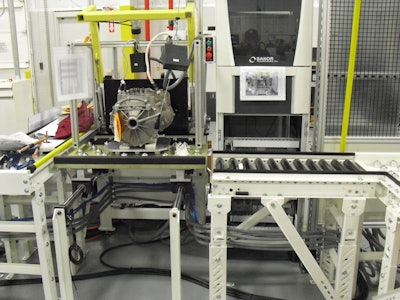
4. Communication With Control Modules
Communication with MCUs is another feature that has to be built in to testing systems for hybrid or electric vehicles. Whereas engines used to be controlled primarily by the throttle and ignition, HEV engines have an engine control unit (ECU), as well as a separate MCU to control the electric drive.
The vehicle may also have separate units for controlling the transmission and/or charging systems. These units typically communicate commands and/or data between themselves via a high-speed vehicle networks, for example CAN, LIN, or FlexRay, among others.
The powertrain and electric motor data acquisition and control systems referred to above are designed to integrate all these units into a single, coordinated test platform that can communicate with these control units simultaneously and efficiently and properly test complex drivetrain configurations.
There is great excitement in the off-road heavy vehicle market over the promise of improved environmental performance of hybrid and electrical vehicles. To achieve that promise, designers and manufacturers must adopt driveline testing programs that meet the needs of this new and emerging technology.
Randal Beattie is the owner of SAKOR Technologies Inc.
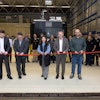
![Deutronic Dbl 1903 14[1]](https://img.oemoffhighway.com/files/base/acbm/ooh/image/2023/10/Deutronic___DBL_1903_14_1_.6528568875a4e.png?auto=format%2Ccompress&fit=crop&h=100&q=70&w=100)
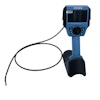

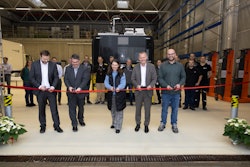
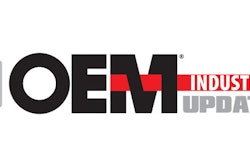

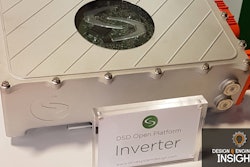
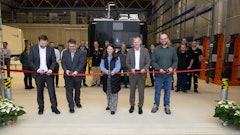
![Deutronic Dbl 1903 14[1]](https://img.oemoffhighway.com/files/base/acbm/ooh/image/2023/10/Deutronic___DBL_1903_14_1_.6528568875a4e.png?ar=16%3A9&auto=format%2Ccompress&fit=crop&h=135&q=70&w=240)



